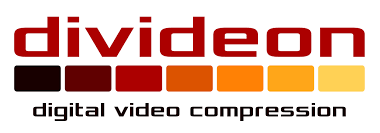It’s easy to imagine the deployment of HEVC as a case study in business and technology schools about how not to launch a technology. Not only do you have a launch cycle that clearly limited adaption, you also have classic illustrations of two of the major problems related to standard-essential patents, patent holdup, and royalty stacking.
Patent holdup refers to the practice of waiting to declare your patent rights until after the technology has become accepted. Early adopters choose the technology without a realistic estimate of cost, and once hooked, the costs of changing technologies are so high that the IP owner can charge a much higher royalty than it could at the start. The participants in the Velos Media patent pool, which launched (by my count) 4 years, 4 months, and 5 days after HEVC received first-stage approval, is the perfect example.
The second problem, royalty stacking, describes a scenario where so many patents are involved that even if each is fair, reasonable, and non-discriminatory (FRAND), as standard-essential patents are required to be, the total cost becomes unreasonable. When MPEG LA announced its $0.20/unit, $25 million annual cap pricing, it was tough to swallow, but it felt reasonable. Then HEVC Advance launched with per-unit pricing nearly 10 times as high, and a cap close to double, and the combined pricing didn’t feel nearly as FRAND-ly.
As I write this in mid-October, Velos still hasn’t announced its rates, so the total damage isn’t known. While we know that Technicolor also claims to have other HEVC-related intellectual property, there’s actually no guarantee that there won’t be others.
Most readers know all this. So why am I recounting? Because there’s a Stockholm-based company named Divideon offering a new codec that uses technology from the HEVC and Video Coding Experts Group (VCEG) and a novel design to simplify and add certainty to codec pricing. Specifically, Divideon’s xvc codec comes with a guarantee that your royalty will be fixed for the life of the contract, protecting against Velos-like surprises.
Here’s how it works: When creating the codec, Divideon traced the IP relating to each component back to its inventor. Patent holders who chose to participate registered with Divideon; if they declined to register, their technology wasn’t included. The codec design is modular, so if any infringements occur, Divideon can remove that technology from the codec.
If xvc licensees are approached with an infringement claim, Divideon has 60 days to license the IP (at no cost to you), fight the claimant (and bear all costs and damages), or remove that IP from xvc. Of course, while this guarantees a known royalty, you may lose quality or performance if an IP owner unexpectedly appears and won’t participate, forcing Divideon to remove the IP from its codec. I asked about this, and the company responded that licensees pay by the month and can discontinue anytime. While this provides some protection, you still may be forced to convert from xvc sometime down the road if this scenario occurs, which could be seriously problematic if you’ve deployed xvc in hardware. No solution is without risk.
How does the codec perform? From a development perspective, it’s a work in progress. However, the company prepared some test streams that I was able to compare with H.264, x265, the MainConcept HEVC codec, VP9, and AV1 files at the same data rate. It wasn’t a totally apples-to-apples comparison for many reasons, but in the two real-world files, xvc was the quality leader. In the Sintel comparison, xvc trailed only MainConcept. Pretty impressive performance.
It’s definitely early days, but xvc appears to be a codec you should keep your eye on.
 Streaming Learning Center Where Streaming Professionals Learn to Excel
Streaming Learning Center Where Streaming Professionals Learn to Excel









